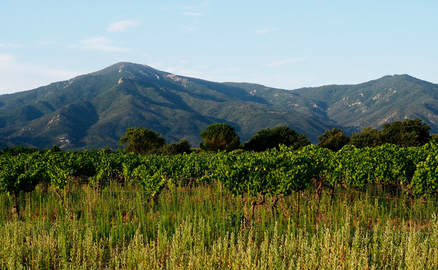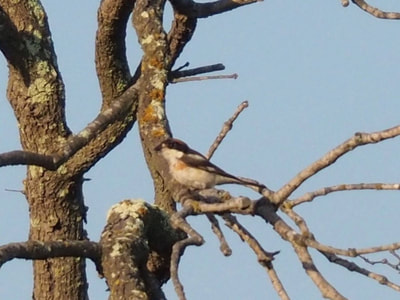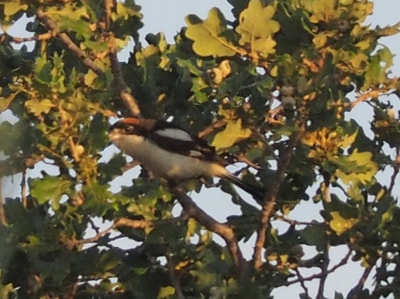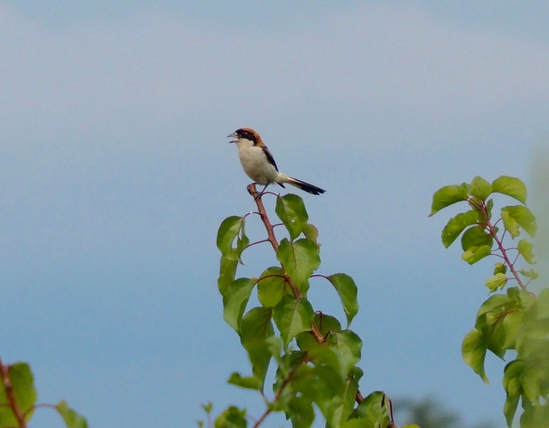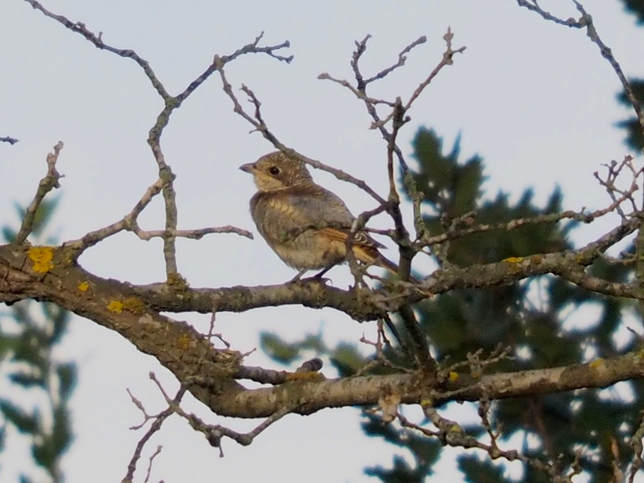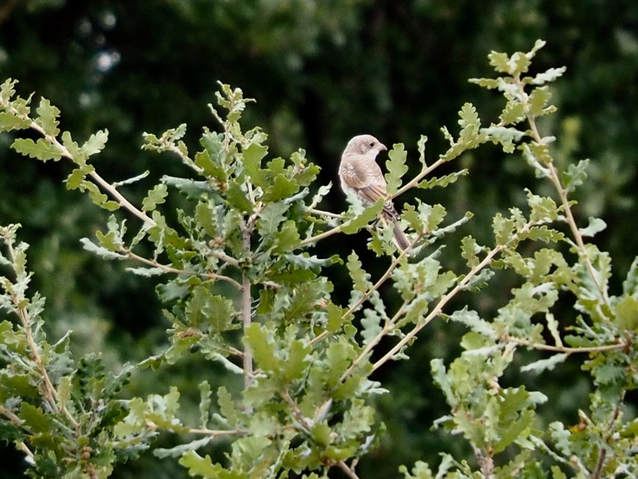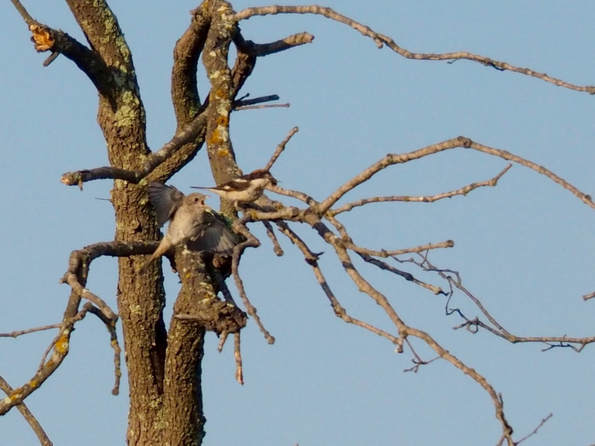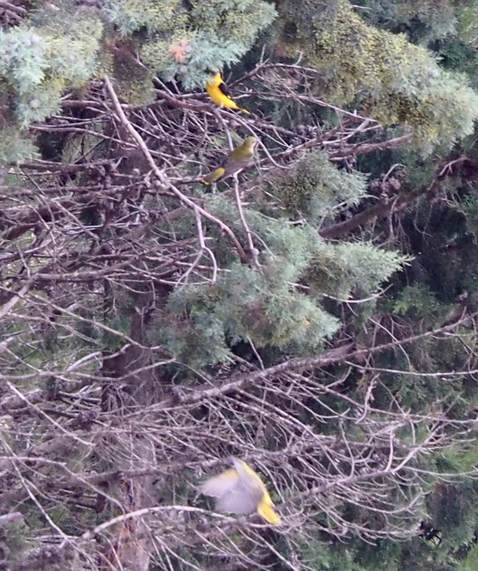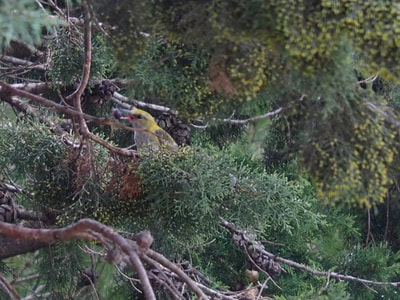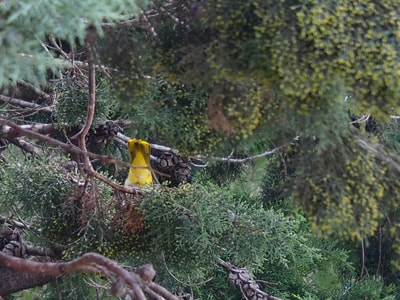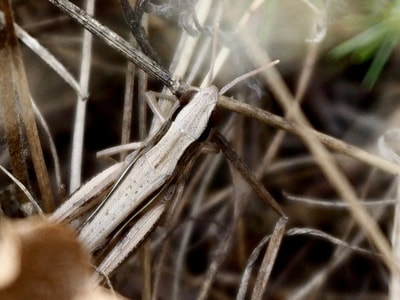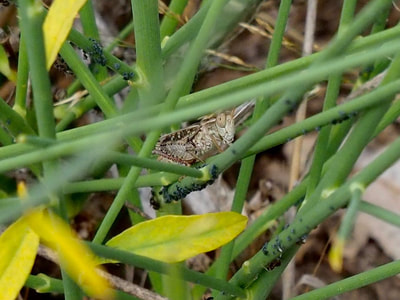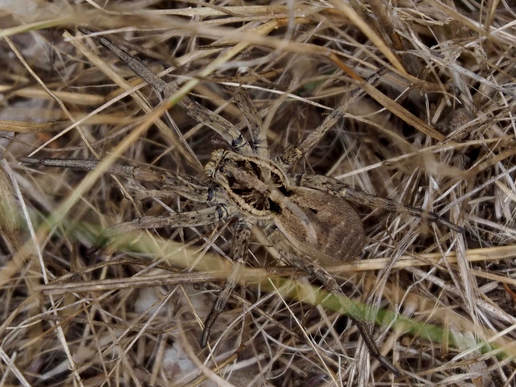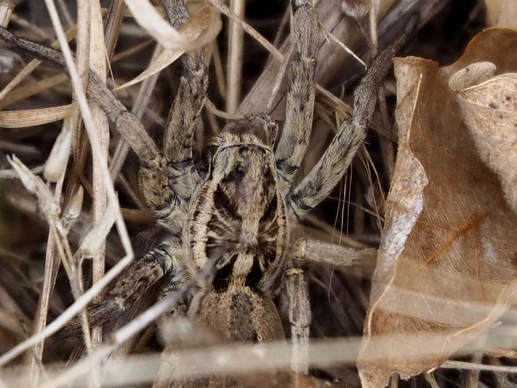They are summer visitors, similar in size to a wheatear - bigger than a sparrow, smaller than a song thrush; nicknamed "butcher birds" because, like other shrikes, they have a gruesome habit of hanging dead prey on thorns. I have yet to find one of these larders, but for several years running have seen an adult (always on its own) in roughly the same area on my regular vineyard and orchard circuit. Early this spring I saw one on two occasions, but in a slightly different section of the walk. Come April, I switched to walking in the hills during the worst of the tick season (ticks can be particularly bad in the vineyards, where sheep are sometimes grazed), and only returned to to the plain around the beginning of this month.
In the last three days, to my delight, I've identified two small family groups of woodchat shrike. Except that up to now, per group, I've only ever seen one adult and no more than three young in the same place at the same time. One lot I keep finding in an area of apricot, olive, pine and a few oak trees; the other, among vines and oaks (exactly where I've seen a single bird in previous years). Only two or three hundred metres of grassland separate these micro habitats, which isn't far as the shrike flies. So I've been trying to work out if one family of five or six young has split into two, to facilitate feeding and training duties, or if, in fact, there are two families of about three young each. I've learned that the first scenario is quite possible. Equally, it's not unusual for this species to nest very close together, but in those circumstances adults usually have spats along the territorial border. So far I haven't witnessed any arguments.
Yesterday I photographed one parent in the olive and apricot habitat, and this morning finally captured the other in the vines. On checking the pictures, it's obvious straightaway that they are different birds. But which sex? If both the same, I could safely assume we have two families.
Unfortunately, sexing woodchat shrike isn't easy; they have very similar plumage. Apart from a bright chestnut cap, which extends down the back of their neck, they are black and white. A white rump and bold white flashes on their wings are especially distinctive in flight. According to my book, the main difference is that the female has a little more white around her eye. Impossible to spot that in the field, and inconclusive in my photos at maximum magnification. Today I asked the GOR for their opinion. Apparently there can be a lot of variation between individuals, but the consensus is that my rather more drab adult with blobs on the chest, is most probably a female (below left), while the other, with brighter, smarter plumage, is a male (below right). I might have have guessed.
Click on photos for larger image.
This behaviour strikes me as practical, and a clever way of increasing the survival chances of the whole brood. It also intrigues me. If I understand correctly, adult pairs aren't hardwired to do this every year as a matter of course. So how do they make the decision, and how do they communicate it to each other and their young? My first guess is that it depends on numbers. It's normal for five or six eggs to be laid. But if all chicks fledge, this number of mouths to feed could be the trigger (which then begs another question: can woodchat shrike count?). My second guess is that the female feeds only some of the young once they've fledged (which would indicate that adults can tell their offspring apart). Those individuals imprint on her and follow her wherever she flies. Meanwhile, the male feeds only the others, and they imprint on him. These suppositions have no scientific foundation whatsoever but are, in lieu of further research, my best stab at thinking like a shrike.
Click on photos for larger image.
Temporarily distracted from birdwatching, I took a closer look. There seems to be a huge variety of grasshopper species, and all are so well camouflaged.
Click for larger image.
Inevitably, new discoveries lead to new questions. Now I'm wondering if woodchat shrike prey on wolf spiders...
